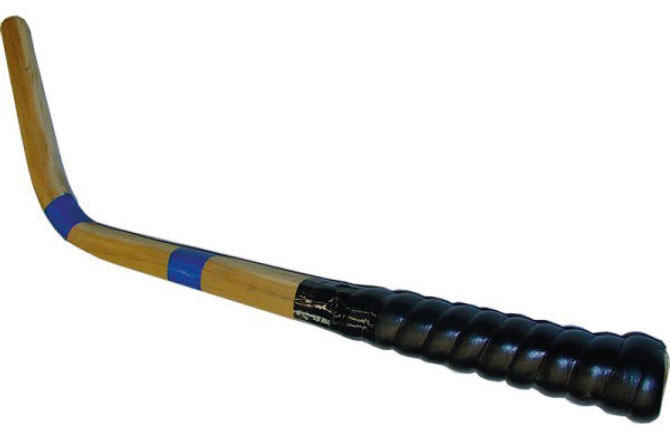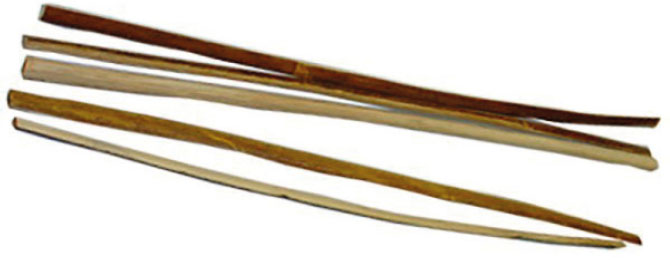
However, although some music that we think of as belonging to a world-music tradition is based on cultural practices from other countries, some music is centred far closer to home. One of my favourite examples of this is British Bhangra music.
History
Originating from the Punjab region of northern India and Pakistan, the rhythms used in modern Bhangra are born out of the music used to accompany traditional folk dances that celebrate the harvest in the Punjab. The dances are usually accompanied by the dhol drum (fig. 1) and a small one stringed instrument called a tumbi (fig. 2).

Fig. 2
Bhangra in the UK developed among the early Punjabi immigrants who came to the UK to work in the steel foundries in the West Midlands. The music developed and became incredibly popular not only in the UK among the British Asians of Punjabi heritage but across the world as a popular music genre and as music for Bollywood blockbusters. Bhangra continues to develop by fusing with other popular music styles such as hip-hop, with artists such as Jay-Z among its fans.
Bhangra beats
Here we will look at how to replicate the basic Bhangra dhol drum rhythms as a music teaching activity. The traditional dhol drum is a barrel-shaped drum with a drum head at either end. The head on one side is tuned to a low sound and is known as the bass (or base) head and is made from a natural skin while the opposite head, known as the treble head, is made of a polyester film or plastic and tuned to a high pitch. Both heads are tensioned by a rope system across the drum. Each drum head is struck with a different beater or stick. The low-pitched head is played with a beater known as a dhol dagga, a wooden stick which is bent at an angle to allow the stick to strike the drum at the correct angle when the dhol drum is at a horizontal position on the player's body (fig. 3). The high treble head is played with a slim cane straight stick known as a dhol chanti which helps to produce a sharp high pitched note from the drum (fig. 4).

Fig. 3 
Fig. 4
The combination of these two sounds allows the player to produce an exciting combination of low- and high-pitched sounds which create the traditional Bhangra rhythms. If you do not have access to traditional instruments you can use any double-headed drum (such as the tom-tom from a drum kit) and tune one head to a high pitch and the other to a low pitch to replicate the sound, and using the small end of a drum stick on the high-pitched head and the other thicker end on the low-pitched head.
To begin playing out Bhangra rhythm, first we will learn the basic beat for the larger bass/base head. This is produced by playing a strong beat on the first and fourth beat of a group of four notes in 4/4 time as in fig. 5 above.

Fig. 5
Next we add in the rhythm for the smaller treble head, which plays a dotted beat as in fig. 6.

Fig. 6
First ask your player to practise each rhythm separately before practising both rhythms at the same time. In the example the small treble-head part is indicated by the notes and the large bass/base part by the red lines as in fig. 7.

Fig. 7
When this has been mastered you can now introduce some variation by adding accents to certain beats within the rhythm on the low pitch bass/base head. This is first done by accenting not only the first and fourth beats but also a strong accent on the semiquaver of the third beat in the bar as in fig. 8.

Fig. 8
The last variation we are going to add in is played by accenting the first and fourth beats and also adding a strong accent on the semiquaver of the second beat as in fig. 9.

Fig. 9
Like a lot of world music these rhythms are cyclic, meaning they repeat themselves round and round, but to create a performance try by beginning with the drummers all playing the first basic rhythms for both heads as in fig. 7, then on a cue switch to playing fig. 8, and then fig. 9. You can experiment with switching between the different accented examples as you wish; don't forget to try to add in some variations of dynamic to add more interest to your Bhangra drumming.
Other representations of world music in British culture can be found in a wide range of music including religious practices and West End musicals. There is a story that the tambourine, a musical instrument of middle eastern origin, was introduced into the services of the Salvation Army by Lizzie, a poor cockney girl who worked in the ticket office of a music hall in east London. When she joined the Salvation Army, she emulated the tambourine playing of a Gypsy troupe she saw performing at her old workplace. Musical theatre is full of influences of world music, Evita and Argentine tango, pentatonic Asian influences in the ‘March of the Siamese Children’ from the King and I, Klezmer music in Fiddler on the Roof and African musical influences in The Lion King being just a few instances. So it seems you don't have to travel the world to experience world music – just listen out for it closer to home.








